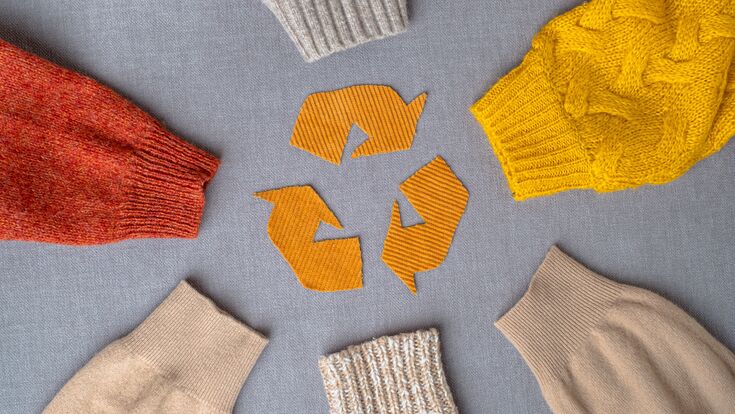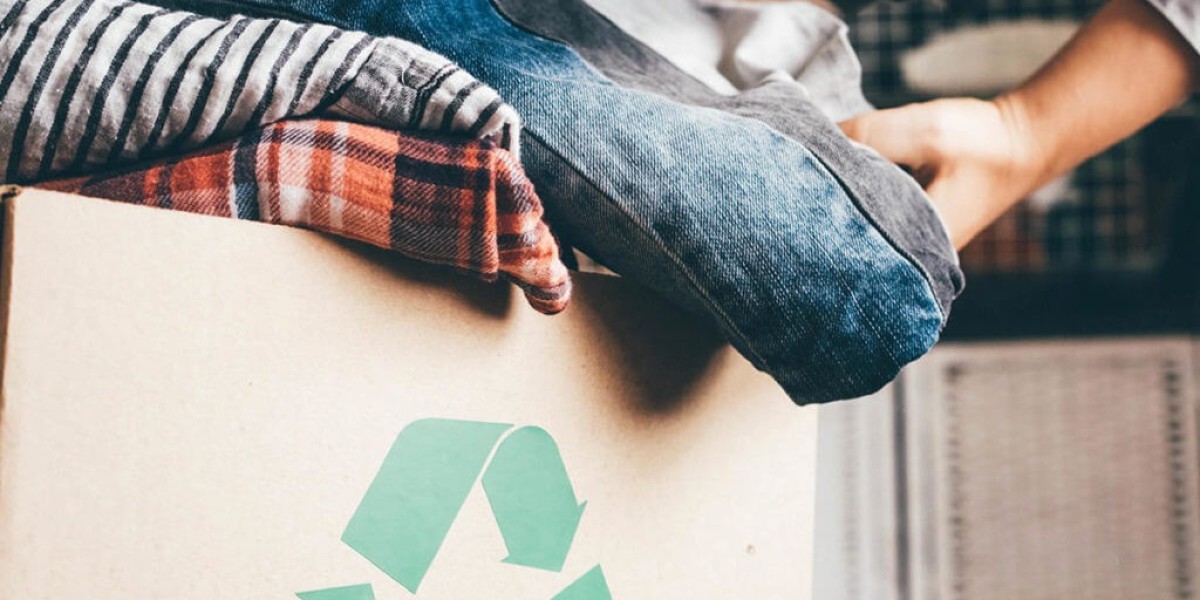
The environmental impact of fast fashion
The fast fashion industry has grown exponentially in recent decades with clothing brands producing new collections on a near-weekly basis. However, this consumerism has come at a huge environmental cost. The textile industry produces 10% of global carbon emissions and is the second largest polluter of water globally. It takes around 2700 liters of water to produce just one T-shirt and dyes often contaminate waterways with harmful chemicals. With over 80 billion new garments produced each year and clothing disposal increasing, millions of tons of textile waste ends up in landfills annually. This linear “take-make-dispose” model is simply unsustainable for our planet.
The benefits of Recycled Textiles
Recycled and upcycled textiles present a more eco-friendly solution. When clothes can’t be reused as is, the materials can be recycled into new products, reducing pollution and cutting waste. Recycled textiles lower carbon emissions, water usage, and pollution compared to virgin materials. The process also helps extend the lifespan of resources like cotton and polyester that would otherwise end up in landfill. Recycling old clothes not only benefits the environment but the fashion industry as well. Recycled materials are often cheaper for brands to source, helping lower production costs. The growing consumer demand for sustainable fashion is also driving more companies to adopt recycled textiles.
Challenges in textile recycling
While the benefits of textile recycling are clear, challenges remain in scaling up the processes. Traditional mechanical recycling, which breaks fabrics down into fibers that can be re-spun into new yarns, often results in lower quality materials. The fibers become shorter with each recycling cycle, limiting how many times a garment can be recycled this way. Chemical and technological advancements are helping overcome some issues but high recycling rates still remain elusive. Collection and sorting of used clothes also poses difficulties due to the variety of fiber blends and dyes used. Many consumers lack convenient recycling options for post-consumer textile waste as well. Greater industry collaboration and investments will be needed to address these challenges and unlock the full potential of recycled textiles.
New innovations in recycled fabric
Fortunately, innovation is underway across the textiles supply chain to advance recycling methods and develop high quality recycled materials. New processes like dissolved cellulose fiber extraction can break fabrics down to their most basic chemical components before being reconstituted as new fabrics without loss of quality. Hybrid recycling approaches combining mechanical and chemical steps are maximizing the fibers recovered. On the materials side, recycled polyester is now a well-established staple, while newer green materials like Circulose—a pulp made from 100% cotton scraps—are gaining popularity. Even complex blends can now be effectively recycled through new technologies at large scale facilities. Retailers and brands are also getting involved, collaborating on closed loop recycling programs to source recycled materials for new collections. These innovative solutions are helping scale up textile recycling and close the loop on clothing lifecycles.
Rise of recycled fashion brands
Reflecting growing consumer demand, many fashion brands are now wholly based on recycled and organic materials. Pioneers like ECOALF transform used garments into new fabrics through their innovative ‘0% waste’ process. Other popular recycled brands include Evrnu—who use cellulosic fiber technologies to create fabric from cotton scraps, threads, and more. Meanwhile, BLOOM—run on a mission of upcycling post-consumer waste—has created stunning collections from everything from coffee grounds to wedding dresses. Even major fast fashion brands are joining the shift—H&M’s “Conscious” sub-brand exclusively uses recycled or sustainably sourced materials. With the rise of clever marketing emphasizing their eco-credentials, recycled fashion brands are experiencing rapid growth as consumers opt for greener options.
The future of Recycled Textiles
As sustainability continues gaining widespread attention, reused textiles seem poised to play a key role in the future of fashion. By ensuring valuable materials get a ‘second life’ instead of being discarded, the industry can significantly curb emissions and waste. With innovation addressing barriers related to quality, collection, and scale; and growing brand adoption closing post-consumer loops, recycling rates for textiles are projected to rise sharply in coming years. Furthermore, legislation may soon mandate minimum recycled content levels or extended producer responsibility models to accelerate the transition. Overall, reused textiles present a win-win-win for the planet, industry and consumers - critical to transforming fashion into a truly sustainable and circular model. With the rise of technology, innovation and consumer interest, the future certainly looks bright for recycled fashion.



